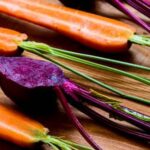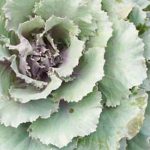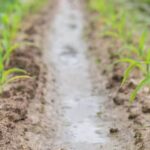Are you interested in starting your own fruit and vegetable garden, but not sure where to begin? Fruit and vegetable gardening for beginners can be a rewarding and enjoyable experience, providing you with fresh produce right from your backyard. Whether you have a large plot of land or just a small space on your balcony, this guide will help you get started on your gardening journey.
Choosing the right location for your garden is crucial for the success of your fruits and vegetables. Understanding soil types and fertilizer is also important for healthy plant growth. In addition, having the essential tools and equipment will make the gardening process much easier and more efficient.
This article will cover everything you need to know about getting started with fruit and vegetable gardening, from selecting the best fruits and vegetables for beginners to planting, caring for, and harvesting your garden. We’ll also provide tips on dealing with common pests and diseases that may affect your plants, as well as resources for further learning and joining gardening communities. So let’s dig in and start growing.
Choosing the Right Location for Your Garden
When it comes to fruit and vegetable gardening for beginners, choosing the right location for your garden is crucial for the success of your plants. The ideal location for a fruit and vegetable garden is an area that receives at least 6-8 hours of sunlight per day, has well-drained soil, and is easily accessible for regular maintenance.
It’s also important to consider factors such as proximity to water source, protection from strong winds, and availability of space for the plants to grow.
One helpful tip when choosing a location for your garden is to observe the area throughout the day to determine the amount of sunlight it receives. Keep in mind that different fruits and vegetables have varying requirements when it comes to sunlight, so it’s important to take this into consideration when selecting a spot for your garden.
Additionally, consider the microclimate of your chosen location, as areas with trees or buildings nearby can create pockets of cooler or warmer air that can affect plant growth.
In addition, it’s important to think about accessibility when choosing a location for your fruit and vegetable garden. You’ll want a spot that is easy to reach for regular watering, weeding, and harvesting. If you’re new to gardening, starting with a small plot in an easily accessible location can make the gardening experience more enjoyable and manageable.
| Location Factors | Considerations |
|---|---|
| Sunlight | At least 6-8 hours per day |
| Soil Drainage | Well-drained soil preferred |
| Accessibility | Easy reach for maintenance |
Understanding Soil and Fertilizer for Successful Gardening
Soil and fertilizer are crucial elements in successful fruit and vegetable gardening for beginners. Understanding the composition of soil and how to properly fertilize your garden can make a significant impact on the health and productivity of your plants.
First and foremost, it’s important to test the pH levels of your soil. Most fruits and vegetables thrive in slightly acidic soil, with a pH range of 6.0 to 6.8.
Testing kits are readily available at gardening centers, or you can send a sample to a professional lab for analysis. Once you know the pH level of your soil, you can make any necessary adjustments by adding amendments such as lime to raise the pH or elemental sulfur to lower it.
In addition to pH levels, it’s also crucial to understand the texture and composition of your soil. Different plants have different preferences when it comes to soil type, so knowing whether you have sandy, loamy, or clay soil will help determine which fruits and vegetables will grow best in your garden.
For example, root vegetables like carrots and potatoes thrive in loose, well-draining soils, while moisture-loving crops like lettuce and cabbage do well in richer, more moisture-retentive soils.
| Soil Type | Preferred Plants |
|---|---|
| Sandy Soil | Carrots, Potatoes |
| Loamy Soil | Tomatoes, Beans |
| Clay Soil | Lettuce, Cabbage |
When it comes to fertilizing your garden, there are two main types of fertilizers: organic and synthetic. Organic fertilizers are derived from natural sources such as compost, manure, or bone meal. They release nutrients slowly over time as they decompose and improve soil structure. On the other hand, synthetic fertilizers are manufactured from chemical compounds and provide an immediate nutrient boost to plants.
It’s essential to choose the right fertilizer for your specific plants’ needs by considering their nutrient requirements at different stages of growth. For instance, leafy greens require plenty of nitrogen for lush foliage growth while root crops need phosphorus for strong root development. By understanding your plants’ nutritional needs and the composition of your soil, you can create an optimal feeding regimen that promotes healthy growth and abundant harvests in your fruit and vegetable garden for beginners.
Essential Tools and Equipment for Fruit and Vegetable Gardening
When starting a fruit and vegetable gardening for beginners, it’s important to have the right tools and equipment to ensure your success. Here are some essential items you will need to get started:
- Hand trowel: A small hand tool that is perfect for digging small holes for planting seeds or seedlings.
- Pruning shears: These are essential for trimming and pruning your plants as they grow. Proper pruning helps promote healthy growth and higher yields.
- Garden hose or watering can: Proper watering is crucial for the success of your garden. Make sure you have a reliable way to water your plants regularly.
- Garden gloves: Protect your hands from thorns, sharp edges, and dirt with a good pair of gardening gloves. They will also provide grip when handling tools and equipment.
In addition to these tools, consider investing in a garden wheelbarrow or cart for transporting soil, mulch, plants, and other heavy materials around your garden. You may also want to have a sturdy rake, shovel, and hoe on hand for preparing the soil and maintaining the garden.
Having the right tools will make your fruit and vegetable gardening experience much more enjoyable and productive. Make sure to keep them clean, sharp, and well-maintained to get the most out of them.
Selecting the Best Fruits and Vegetables for Beginners
When it comes to starting a fruit and vegetable gardening for beginners, it’s important to choose the right plants that are easy to grow and maintain. Selecting the best fruits and vegetables for beginners can make the difference between a successful garden and a frustrating experience.
Easy-to-Grow Vegetables
For beginners, it is recommended to start with easy-to-grow vegetables such as tomatoes, lettuce, carrots, radishes, and green beans. These vegetables are relatively low maintenance and are perfect for those who are new to gardening. They require minimal attention and can thrive in various growing conditions.
Beginner-Friendly Fruits
When it comes to fruits, strawberries, raspberries, and blueberries are great choices for beginners. These fruits are relatively low-maintenance and can be grown in containers or directly in the ground. They also provide a delicious reward for your efforts once they ripen.
Consider Local Climate
Before selecting which fruits and vegetables to grow in your garden, it’s important to consider your local climate. Certain plants thrive better in specific climates so take into account the temperature ranges of your region before making your selections.
By choosing the right fruits and vegetables for beginners, you can set yourself up for a successful gardening experience. With proper care and attention, you’ll be enjoying the bountiful harvest of your fruit and vegetable garden in no time.
Planting and Caring for Your Garden
Planning Your Garden Layout
Before you start planting, it’s important to plan the layout of your garden. Take into consideration the space available and the amount of sunlight your chosen location receives. Make sure to space out your plants properly to avoid overcrowding and allow for proper air circulation. You can either plant directly in the ground or use containers, raised beds, or vertical gardening techniques depending on your space and preference.
Watering and Maintenance
Proper watering is essential for the success of your fruit and vegetable garden. Different plants have different water needs, so it’s important to research the specific requirements for each type of fruit or vegetable you are growing. Remember to check the soil moisture regularly and water deeply when needed, especially during hot weather.
In addition to watering, regular maintenance such as weeding, pruning, and mulching is necessary to keep your garden healthy. Weeds can rob your plants of nutrients and water, so make sure to remove them regularly. Pruning helps promote healthy growth and can prevent disease by improving airflow within the garden.
Organic Pest and Disease Management
As a beginner in fruit and vegetable gardening, it’s essential to familiarize yourself with common pests and diseases that can affect your plants. Look out for signs of infestation or disease, such as discoloration, wilting, or unusual spots on leaves.
Research organic methods for pest control such as companion planting, handpicking insects, or using organic sprays like neem oil. Prevention through good gardening practices like proper watering and maintaining healthy soil can also help reduce the likelihood of pest infestations and diseases affecting your garden.
Dealing With Common Pests and Diseases in the Garden
When starting a fruit and vegetable garden for beginners, dealing with common pests and diseases is an essential part of maintaining a healthy garden. There are various pests and diseases that can affect the growth of your plants, but with proper care and attention, you can minimize their impact on your garden. Here are some common pests and diseases to watch out for in your garden:
Pests:
- Aphids: These tiny insects can suck the sap from your plants, causing them to wilt and die.
- Slugs and snails: These slimy creatures can munch through leaves and tender young shoots.
- Caterpillars: These larvae can devour the leaves of your plants, leaving them looking ragged.
Diseases:
- Powdery mildew: This fungal disease appears as a white powdery coating on the leaves of plants.
- Late blight: This disease affects potatoes and tomatoes, causing dark spots on the leaves and stems.
- Root rot: This condition is caused by overly wet soil, which can lead to rotting roots and wilting plants.
To prevent or control these pests and diseases, consider using natural remedies such as homemade insecticidal soap or neem oil for pest control. For diseases, make sure to water your plants at the base to avoid getting their foliage wet, as damp conditions can encourage disease development.
Additionally, encouraging beneficial insects such as ladybugs or planting companion plants like marigolds can help keep pest populations under control. Regularly inspecting your plants for signs of pests or diseases will also allow you to catch any issues early before they become serious problems in your fruit and vegetable garden for beginners.
Harvesting and Enjoying the Fruits of Your Labor
After weeks of care, attention, and patience, your fruit and vegetable garden has finally come to fruition. It’s time to reap the rewards of your hard work and enjoy the bountiful harvest that nature has provided. Harvesting your homegrown produce is a satisfying and fulfilling experience that truly showcases the fruits of your labor.
Before you begin harvesting, it’s important to know when each fruit and vegetable is ready for picking. Different fruits and vegetables have varying ripening times, so it’s crucial to familiarize yourself with the specific signs of readiness for each type of produce. For example, tomatoes should be picked when they are fully colored and firm but give slightly under pressure, while most root vegetables can be harvested once they have reached a satisfactory size.
Once you have successfully harvested your fruits and vegetables, it’s time to savor the flavors of your labor. There’s nothing quite like biting into a ripe tomato or tasting a freshly-picked strawberry straight from the vine. Whether you plan to consume your produce immediately or preserve it for later use, taking pleasure in the delicious results of your hard work is an essential part of the fruit and vegetable gardening experience for beginners.
Resources for Further Learning and Gardening Communities
In conclusion, fruit and vegetable gardening for beginners can be a rewarding and fulfilling experience. By following the tips and guidelines provided in this article, you can successfully start your own garden and enjoy the fruits of your labor. Remember to choose the right location for your garden, understand the soil and fertilizer needs, and acquire the essential tools and equipment for successful gardening.
Selecting the best fruits and vegetables suited for beginners will ensure a more manageable and enjoyable gardening experience. Planting and caring for your garden takes patience and dedication, but with proper care, you will soon be able to harvest and enjoy fresh produce from your own backyard.
For those who want to continue their learning journey or connect with other like-minded individuals, there are various resources available for further learning and gardening communities. Whether it’s joining local gardening clubs, attending workshops, or exploring online forums and social media groups, these resources provide valuable opportunities to expand your knowledge, exchange tips and experiences with others, and grow as a gardener.
So don’t hesitate to dive into the world of fruit and vegetable gardening – it’s a journey full of growth, learning, and joy.
Frequently Asked Questions
How Do You Start a Fruit and Vegetable Garden for Beginners?
Starting a fruit and vegetable garden for beginners requires some planning and preparation. Begin by selecting a sunny location with well-drained soil. Start small by choosing easy-to-grow plants, such as tomatoes, peppers, and lettuce. Make sure to water regularly and keep an eye out for pests.
What Are the Easiest Fruit and Vegetables to Grow?
Some of the easiest fruits and vegetables to grow include tomatoes, zucchini, strawberries, and herbs like basil and mint. These plants are relatively low-maintenance and can thrive in a variety of growing conditions. Beginners can start with these crops to gain gardening experience before moving on to more challenging plants.
What Is the Easiest Vegetable Garden for Beginners?
For beginners, the easiest vegetable garden would typically include plants like lettuce, radishes, green beans, and carrots. These vegetables are relatively low maintenance and don’t require a lot of space to grow. Additionally, they have shorter growing seasons which can be beneficial for beginners who want to see results relatively quickly.

If you’re looking to get into vegetable gardening, or are just looking for some tips on how to make your current garden better, then you’ve come to the right place! My name is Ethel and I have been gardening for years. In this blog, I’m going to share with you some of my best tips on how to create a successful vegetable garden.





